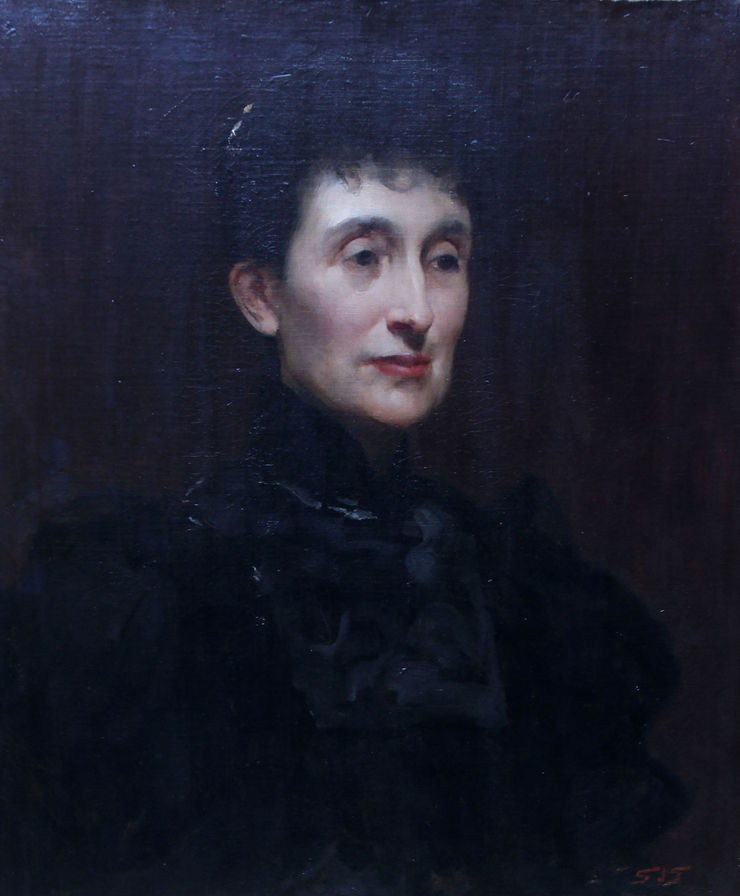Solomon Joseph Solomon (1860-1927)
| Artist Name | Solomon Joseph Solomon (1860-1927) |
|---|---|
| Title | Emily Wynne nee Gore Booth |
| Description | An original oil painting on canvas circa 1905 by noted British Royal Academician Solomon Joseph Solomon. A stunning portrait of Emily Wynne. She was daughter of Sir Robert Gore Booth, 4th Baronet Gore of Lissadell, Co. Sligo, MP. She married Major Charles Bradstreet Wynne in 1860 who was a Justice of the Peace. Painted by one of my favourite late Victorian British artists. It is a strong stunning painting. Signed lower left. |
| Provenance | Midlands collection |
| Medium | Oil on Canvas |
| Size | 24 x 20 inches |
| Frame | Housed in a fine period frame gilt frame which compliments the painting 32 inches by 28 inches |
| Condition | Excellent condition |
| Biography | Solomon Joseph Solomon RA (1860-1927) - was the fourth son of Joseph Solomon, a London businessman, and Helena Lichenstadt, the daughter of a cultured family from Vienna. In 1877 Solomon joined the Royal Academy School. Frederick Leighton, the President of the Royal Academy, as well as successful artists such as Millais and Alma Tadema were the role models for young Solomon and his fellow students, Alexander Stanhope Forbes and Arthur Hacker. In 1879 Solomon was taught by Alexandre Cabanel (1823-1889) in the École de Beaux Arts in Paris. In comparison with the Royal Academy, teaching in the École focused more on drawing from life models than plaster casts of ancient sculptures. Despite his studies in France Solomon was very little influenced by Impressionism. Solomon also studied in the Munich Academy for three months and travelled together with Arthur Hacker in Germany, Holland, Italy, Spain and Morocco. In 1886 Solomon became a founding member of the New English Art Club - a group of artists who reacted to the restrictive selection policies of the Royal Academy. Other members of the Club were the painters Whistler, Steer and Sickert. Solomon did not carry on exhibiting with the New English Art Club, probably because he was alienated by the outspoken opposition of the Club's leaders to the Royal Academy. Solomon exhibited in the Royal Academy between 1881 and 1904 and was elected as an Associate of the Royal Academy in 1895 and an Academician in 1906. 'Samson' was painted when Solomon was only 27 years old, in his new studio in Holland Park. At that time Solomon was starting to gain a reputation, especially as a portrait painter. Millais visited the artist in his studio while he was painting Samson and was surprised that such a large picture could be painted in a small studio. 'Samson' caused a stir when exhibited at the Royal Academy and became Solomon's, best known painting. During the First World War Solomon visited France to inspect the French work on camouflage and report on possibilities for the British. He then worked in the Special Works Park in France where French and British artists collaborated producing camouflage netting and screens. Solomon was instrumental in setting up a camouflage school in London's Kensington Gardens. |
| Price | SOLD |
